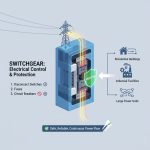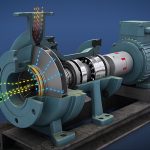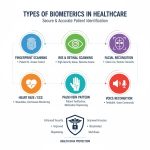Irrigation Controllers Market: Revolutionizing Water Management in Modern Agriculture
Key Takeaways
- The global irrigation controllers market is experiencing robust growth, valued at USD 58.32 billion in 2024 and projected to reach USD 115.45 billion by 2035.
- Smart irrigation technology is driving market expansion with a CAGR of 6.40% from 2025-2035.
- Water scarcity concerns and sustainable farming practices are primary growth catalysts.
- IoT integration and AI-powered systems are transforming traditional irrigation methods.
- North America and Europe lead market adoption, while Asia-Pacific shows highest growth potential.
- Weather-based controllers and soil moisture sensors are gaining significant traction.
- Government initiatives promoting water conservation are boosting market demand.
- Precision agriculture adoption is creating new opportunities for advanced irrigation systems.
Market Overview
The irrigation controllers market represents a pivotal segment within the broader agricultural technology landscape, fundamentally transforming how farmers and landscapers manage water resources. These sophisticated systems have evolved from simple mechanical timers to intelligent, data-driven platforms that optimize water usage while maximizing crop productivity. The market’s impressive trajectory, with valuations jumping from USD 58.32 billion in 2024 to a projected USD 115.45 billion by 2035, reflects the growing recognition of irrigation controllers as essential tools for sustainable agriculture.
Modern irrigation controllers serve as the central nervous system of automated watering systems, integrating multiple data sources including weather forecasts, soil moisture levels, plant water requirements, and environmental conditions. This integration enables precise water application that responds dynamically to changing conditions, eliminating the guesswork traditionally associated with irrigation scheduling. The technology encompasses various controller types, from basic timer-based systems suitable for residential applications to sophisticated weather-based controllers that adjust watering schedules based on real-time meteorological data.
Get a Sample Copy:- https://www.vantagemarketresearch.com/irrigation-controllers-market-0229/request-sample
The market’s growth is particularly pronounced in regions facing acute water stress, where efficient water management has become crucial for agricultural sustainability. Climate change impacts, including irregular rainfall patterns and extended drought periods, have accelerated the adoption of smart irrigation technologies. These systems not only conserve water but also improve crop quality and yields by delivering optimal moisture levels throughout the growing season. The integration of Internet of Things (IoT) capabilities has further enhanced controller functionality, enabling remote monitoring and control through smartphone applications and cloud-based platforms.
Market Segmentation Analysis
The irrigation controllers market demonstrates significant diversity across multiple segmentation parameters, each reflecting specific user needs and technological capabilities. Product-wise, the market divides into weather-based controllers, sensor-based controllers, and smart controllers, with weather-based systems currently holding the largest market share due to their proven effectiveness in reducing water consumption while maintaining landscape health. These controllers utilize evapotranspiration data and local weather information to automatically adjust irrigation schedules, making them particularly attractive to water-conscious consumers and regulatory-compliant installations.
Application segmentation reveals distinct patterns between agricultural, residential, and commercial sectors. Agricultural applications dominate the market volume due to the scale of water usage and the economic benefits of precision irrigation. However, residential and commercial landscaping segments show higher growth rates, driven by increasing awareness of water conservation and rising utility costs. The commercial segment, encompassing golf courses, parks, and institutional landscapes, represents a lucrative niche where advanced controllers justify their higher costs through significant water savings and reduced maintenance requirements.
Geographically, the market exhibits varied adoption patterns influenced by water availability, regulatory frameworks, and economic development levels. Developed markets like North America and Europe focus on upgrading existing systems with smart technologies, while emerging markets in Asia-Pacific and Latin America drive volume growth through new installations. Technology segmentation shows a clear trend toward smart, connected systems that offer smartphone connectivity, cloud-based data analytics, and integration with broader smart home or farm management systems.
Drivers
Water scarcity emerges as the most compelling driver propelling the irrigation controllers market forward, with approximately two billion people worldwide living in countries experiencing high water stress. This crisis has prompted governments to implement stringent water conservation regulations, creating mandatory requirements for efficient irrigation systems in many jurisdictions. The economic impact of water restrictions on agricultural productivity has made precision irrigation controllers essential investments rather than optional upgrades, particularly in drought-prone regions where traditional irrigation methods have become unsustainable.
Technological advancement represents another powerful market driver, with the integration of artificial intelligence, machine learning, and IoT capabilities transforming irrigation controllers from simple timing devices into sophisticated agricultural management tools. These smart systems can predict plant water needs, detect system malfunctions, and optimize irrigation schedules based on multiple variables including weather forecasts, soil conditions, and crop stages. The ability to access and control irrigation systems remotely through mobile applications has particularly resonated with tech-savvy farmers and busy property managers.
Rising labor costs and labor shortages in agriculture have accelerated automation adoption, making irrigation controllers attractive investments for reducing manual oversight requirements. Modern controllers can operate autonomously for extended periods, adjusting to changing conditions without human intervention. Additionally, increasing awareness of sustainable farming practices and corporate environmental responsibility has driven commercial adoption, as organizations seek to demonstrate their commitment to water conservation and environmental stewardship through measurable irrigation efficiency improvements.
Restraints
High initial investment costs present the most significant barrier to irrigation controller adoption, particularly for small-scale farmers and residential users operating under tight budgets. Advanced smart controllers with comprehensive sensor networks and connectivity features can cost several thousand dollars per installation, creating a substantial upfront expense that may not be immediately justifiable for smaller operations. This cost barrier is especially pronounced in developing markets where access to financing for agricultural technology remains limited.
Technical complexity and the lack of technical expertise represent additional challenges hindering market growth. Many potential users, particularly older farmers and homeowners, feel overwhelmed by the sophisticated features and programming requirements of modern irrigation controllers. The learning curve associated with optimizing these systems for maximum efficiency can be steep, leading some users to operate controllers in basic modes that don’t fully utilize their water-saving potential. Poor internet connectivity in rural areas further complicates the adoption of smart, connected irrigation systems.
Maintenance and reliability concerns also restrain market growth, as irrigation controllers operate in harsh outdoor environments that can cause electronic components to fail prematurely. Users worry about system malfunctions during critical growing periods, and the specialized knowledge required for troubleshooting advanced controllers may not be readily available in remote agricultural areas. Additionally, the fragmented nature of the irrigation industry, with numerous small installers lacking technical training on advanced systems, can result in poor installations that fail to deliver promised benefits.
Growth Factors
The convergence of multiple technological innovations is creating unprecedented growth opportunities in the irrigation controllers market. Artificial intelligence and machine learning algorithms are enabling controllers to learn from historical data and continuously optimize irrigation schedules for maximum efficiency. These self-improving systems can adapt to local microclimates, soil variations, and plant phenology, delivering increasingly precise water management over time. The integration of satellite imagery and remote sensing data provides controllers with broader environmental context, enabling more sophisticated decision-making processes.
Government incentives and rebate programs are significantly accelerating market adoption by reducing the financial barriers to entry. Water utilities worldwide are offering substantial rebates for smart irrigation controller installations, recognizing that efficient irrigation reduces peak water demand and extends infrastructure capacity. These programs often provide 50-75% cost rebates, making advanced controllers financially attractive even for price-sensitive segments. Regulatory mandates requiring efficient irrigation systems in new construction projects further guarantee market demand.
The growing precision agriculture movement is creating synergies with irrigation controller adoption, as farmers seek integrated solutions that optimize multiple input variables simultaneously. Modern controllers can interface with farm management software, weather stations, and other agricultural sensors to provide comprehensive crop management capabilities. This integration potential positions irrigation controllers as essential components of broader digital farming ecosystems, expanding their value proposition beyond simple water management.
Emerging Trends
The irrigation controllers market is witnessing a dramatic shift toward artificial intelligence-powered systems that can predict optimal irrigation schedules with unprecedented accuracy. These AI-driven platforms analyze vast datasets including historical weather patterns, soil characteristics, crop water requirements, and real-time environmental conditions to create dynamic irrigation programs that continuously adapt to changing circumstances. Machine learning algorithms enable these systems to improve their performance over time, learning from successful and unsuccessful irrigation decisions to refine future recommendations.
Integration with smart home and farm management ecosystems represents another significant trend, as irrigation controllers become components of broader automated systems. Voice control compatibility with platforms like Amazon Alexa and Google Assistant is making irrigation management more accessible to everyday users, while professional agricultural applications are integrating irrigation data with farm management software for comprehensive operational oversight. This connectivity trend extends to integration with renewable energy systems, enabling controllers to optimize irrigation timing based on solar panel output and energy storage levels.
Sustainability and environmental compliance are driving demand for controllers that can generate detailed water usage reports and demonstrate compliance with conservation regulations. Advanced systems now provide real-time monitoring of water consumption, leak detection capabilities, and automated shut-off features that prevent system failures from causing water waste. The emergence of carbon credit markets is creating additional value for irrigation efficiency, as reduced water pumping and improved crop productivity can generate tradeable environmental credits. Edge computing capabilities are also emerging, allowing controllers to process data locally and maintain functionality even during internet connectivity disruptions, addressing reliability concerns in remote agricultural applications.
Regional Analysis
North America maintains its position as the largest irrigation controllers market, driven by stringent water conservation regulations, mature agricultural practices, and high adoption rates of smart home technologies. California’s ongoing drought concerns and water restriction policies have created a particularly robust market for efficient irrigation systems, with many municipalities mandating smart controller installations for new construction and offering substantial rebates for retrofits. The region’s advanced telecommunications infrastructure supports sophisticated connected irrigation systems, while the presence of major technology companies drives continuous innovation in smart irrigation solutions.
The Asia-Pacific region demonstrates the highest growth potential, fueled by rapid urbanization, expanding agricultural land under cultivation, and increasing water stress in major agricultural areas. Countries like India and China are experiencing significant irrigation controller adoption as part of broader agricultural modernization initiatives. Government programs promoting precision agriculture and water conservation are accelerating market development, while the region’s large manufacturing base is driving down costs and improving product accessibility. The emergence of local manufacturers offering cost-effective solutions tailored to regional needs is further stimulating market growth.
Europe’s irrigation controllers market benefits from strong environmental regulations and substantial government support for water conservation technologies. The European Union’s Common Agricultural Policy includes provisions for irrigation efficiency improvements, providing financial incentives for farmers to adopt advanced irrigation systems. Nordic countries are showing surprising growth in residential irrigation controller adoption, driven by climate change impacts that are making summer watering necessary in previously temperate regions. The region’s focus on sustainable agriculture and circular economy principles creates favorable conditions for continued market expansion.
Competitive Landscape
The irrigation controllers market features a diverse competitive landscape with established players leveraging technological innovation and strategic partnerships to maintain market leadership. Industry giants like Rain Bird Corporation and The Toro Company have built comprehensive ecosystems around their irrigation controller offerings, integrating hardware, software, and services to create compelling value propositions for professional installers and end users. These companies invest heavily in research and development, continuously enhancing their products with advanced features like weather-based scheduling, mobile connectivity, and integration with broader landscape management systems.
Technology-focused companies such as Rachio and Netro have disrupted traditional market dynamics by introducing consumer-friendly smart controllers that emphasize ease of use and smartphone integration. These newer entrants have successfully targeted the residential and small commercial markets with sleek designs, intuitive interfaces, and competitive pricing strategies. Their success has prompted established manufacturers to accelerate their own smart technology development and improve user experience design across their product lines.
Strategic partnerships and acquisitions are reshaping the competitive landscape as companies seek to expand their technological capabilities and market reach. Collaborations between irrigation equipment manufacturers and technology companies are producing innovative solutions that combine hardware expertise with advanced software capabilities. The emergence of platform-based business models, where controllers serve as gateways to broader agricultural technology ecosystems, is creating new competitive advantages for companies that can successfully integrate multiple agricultural management functions. Distribution channel partnerships with home improvement retailers, irrigation dealers, and e-commerce platforms are also crucial for market success, as they determine product accessibility and customer education opportunities.
Recent Developments in Irrigation Controllers Market
- Hunter Industries launched its newest smart irrigation controller featuring advanced weather sensing capabilities and integration with precision agriculture platforms, targeting large-scale commercial and agricultural applications with enhanced water-saving algorithms that can reduce consumption by up to 40% compared to traditional timer-based systems.
- Rachio expanded its smart controller portfolio with the introduction of commercial-grade units designed for larger landscape installations, incorporating enterprise-level management features and bulk configuration capabilities that streamline deployment across multiple properties while maintaining individual site customization options.
- Netafim partnered with leading agricultural technology providers to develop integrated irrigation management systems that combine drip irrigation hardware with intelligent controllers, creating comprehensive solutions for greenhouse and field crop applications that optimize both water and nutrient delivery through precision scheduling.
- Rain Bird Corporation announced significant investments in artificial intelligence research, developing predictive irrigation algorithms that utilize satellite imagery, soil moisture modeling, and crop phenology data to create highly accurate watering schedules that adapt automatically to changing environmental conditions and crop development stages.
- The Toro Company acquired several smaller technology firms specializing in IoT sensors and data analytics, strengthening its capabilities in smart irrigation systems and positioning the company to offer comprehensive connected landscape management solutions that integrate irrigation control with broader property maintenance systems.
- Irritrol introduced breakthrough wireless communication protocols for irrigation controllers, enabling mesh network configurations that improve system reliability in large installations while reducing infrastructure costs and simplifying system expansion for growing operations with evolving irrigation needs.
- Several major manufacturers announced sustainability initiatives including carbon-neutral controller production, recycling programs for old irrigation equipment, and partnerships with renewable energy providers to power smart irrigation systems, responding to increasing environmental consciousness among commercial and residential customers.
FAQs
- What is the current size and projected growth of the global irrigation controllers market?
- What are the main types of irrigation controllers available in the market today?
- How do weather-based irrigation controllers differ from traditional timer-based systems?
- What are the primary factors driving the adoption of smart irrigation controllers?
- Which regions show the highest growth potential for irrigation controllers market expansion?
- What role does IoT technology play in modern irrigation controller functionality?
- How do irrigation controllers contribute to water conservation and sustainability goals?
- What are the main challenges preventing wider adoption of advanced irrigation controllers?
- How do commercial and residential irrigation controller requirements differ?
- What recent technological innovations are shaping the future of irrigation controllers?
![[Market Research Reports] – Research Google News Blog | VMR.Biz](https://www.vmr.biz/wp-content/uploads/2022/12/logo-removebg-preview.png)











